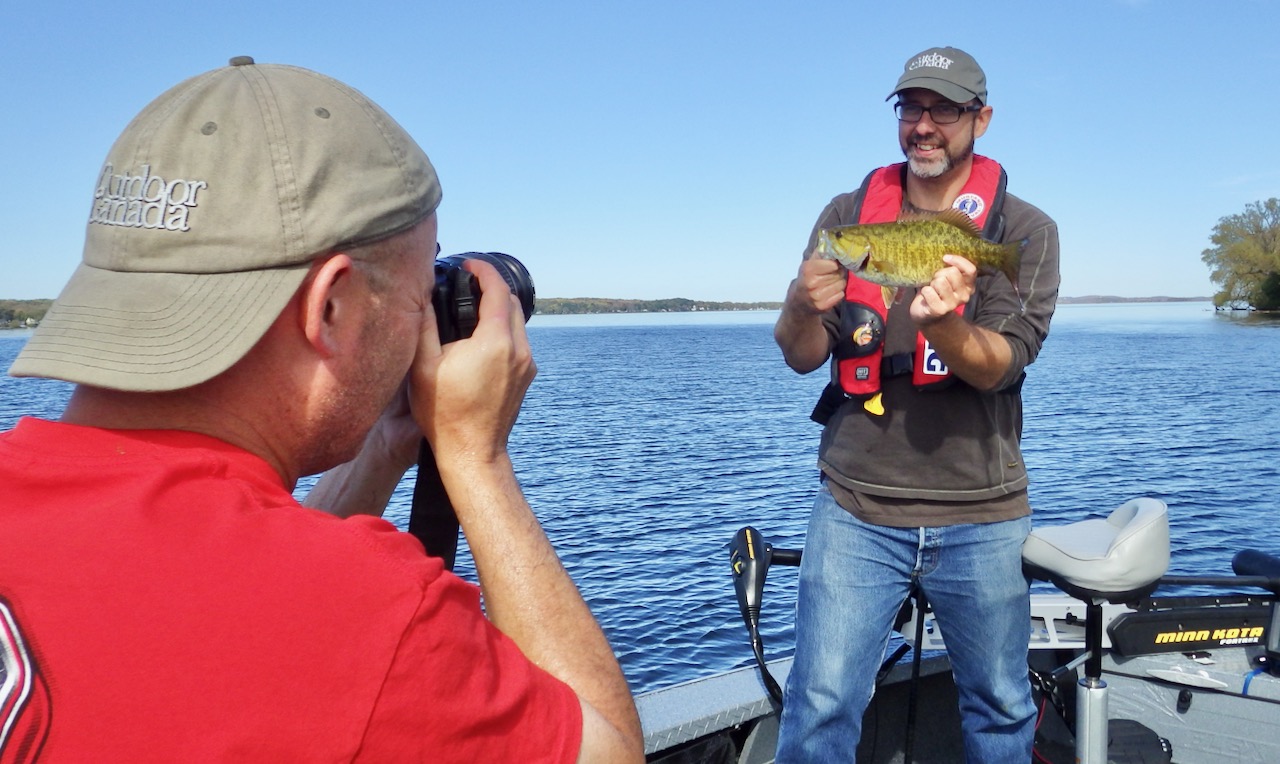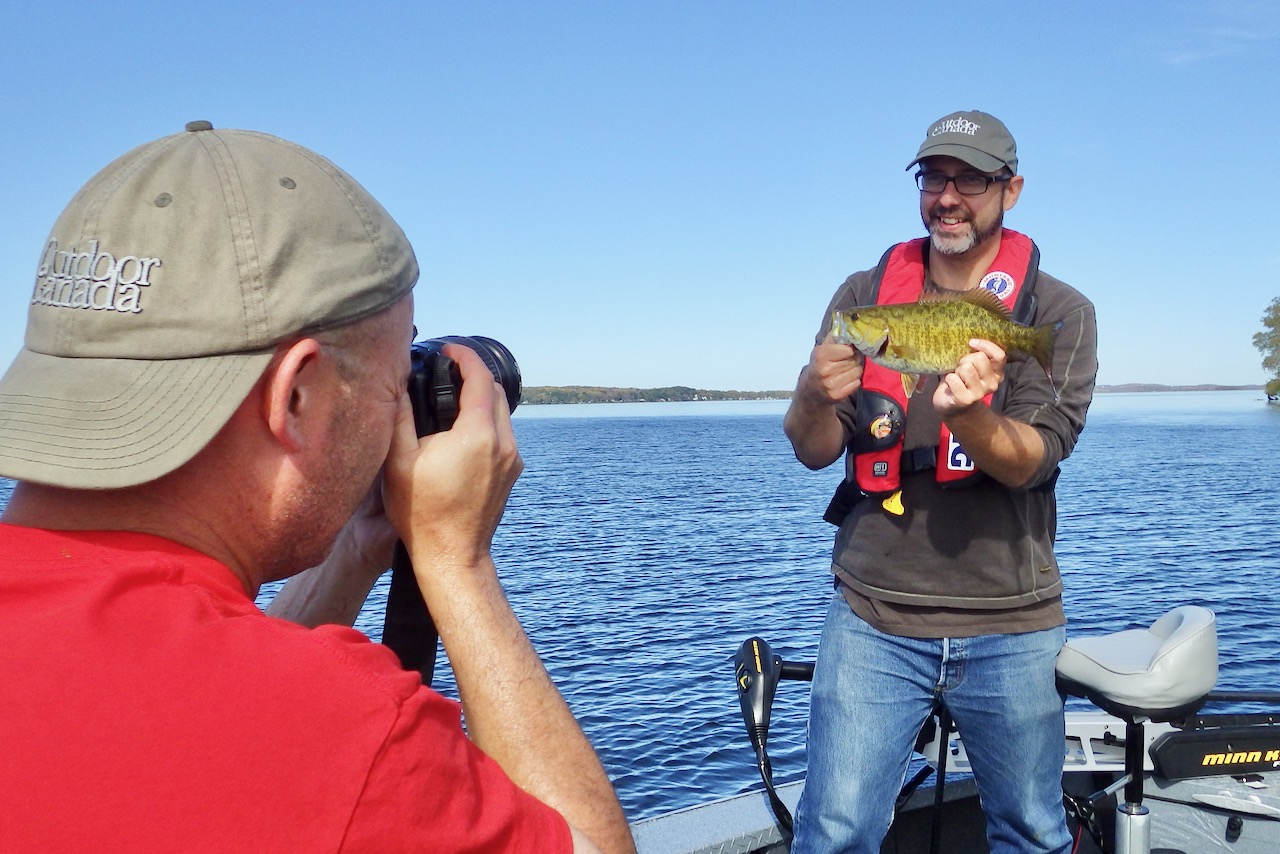PHOTO FINISH
Is that fish pic legal? Ontario revisits its live-release regs
Advertisement
My youngest son’s first walleye was, certainly to him, a wall hanger—the kind of fish that gets photographed, printed and framed. It also lived to swim another day because it ended up being a jig’s length over the legal slot size.
When you can’t eyeball a walleye’s slot size from the net, as was the case with my son’s fish, you have no choice but to keep temporary possession to quickly take a measurement. The same goes for quickly taking a photo before releasing a fish. As brief as those delays may be, however, they are technically offside according to Ontario’s fishing regulations.
Advertisement
Under the current rules, anglers must immediately release any fish where the retention or possession is not allowed, and that applies equally to both out-of-season fish and in-season fish that are over your limit or don’t meet the legal size requirements. So as it stands, both the moment for careful measure and the delay in snapping a phone gallery memory of a legally caught fish could lead to self-incrimination, especially if the image appears on social media.

If there were any fears about those delays being photo-bombed by an approaching conservation officer, however, Ontario’s Ministry of Natural Resources and Forestry has—to its full credit—come up with sensible new wording that will hopefully spawn an official new fishing regulation as of January 1, 2025. During a survey period now closed, the MNRF went fishing earlier this year for anglers’ thoughts on a potential regulation change that would “allow anglers to delay the release of a fish caught during the open season for that species only long enough to photograph, measure and weigh, if the fish is of a restricted size or over daily catch and possession limits.”
To be clear, a fish caught out of season needs to go back in the water straightaway; it’s just a matter of common conservation sense. So the proposed new regulation would also “require the immediate release of fish that are out of season, are species at risk or are otherwise prohibited under the existing recreational fishing rules.”
Advertisement
BIGGER FISH TO FRY
A CO pulling up to the side of your boat doesn’t happen every outing, but when it does, it’s in the interest of enforcing fishing seasons, limits and proper licensing. Most importantly, in my mind, it is about having those olive-green uniforms watching over the lakes and rivers we all want protected. We need more of that.
Advertisement
Have you ever heard of a CO splitting bucktail hairs over the minute or so it takes an angler to release a fish that was legally caught in the first place? In such situations, I’m sure our natural resources professionals are unlikely to fine licensed anglers fishing in season, who are aware of their daily catch limit. But it could happen. The proposed new regulation allowing the delay of release fixes that, providing the legal clarity both anglers and conservation officers deserve.
Kudos to the MNRF for listening to anglers and its own resource managers
The MNRF rightly states the current law is “a barrier to some fishing activities,” such as catch-photo-release tournaments and the overall enjoyment of the angling experience by photographing catches. It also stands to hinder anglers from recording fish data for their angler diaries, which can be valuable fisheries management tools. So in a way, the proposed change also stands to recruit even more fisheries stewards to contribute to citizen science with their creel data—without the worry of crossing any regulation lines.
The potential new delay-of-release regulation also demonstrates we don’t need stricter rules tightening the drag on fishing opportunities in order to achieve angler compliance for the greater conservation good. And kudos to the MNRF for listening to anglers and its own resource managers with respect to the Catch-22 the current regulation puts them all in.
Conscientious anglers will always be the first to agree that a regulation change doesn’t let common sense off the hook. Good fish resuscitation techniques and proper handling are always the priority over a photo opportunity, even if such a delay is allowed. As famed conservationist Aldo Leopold put it, “Ethical behaviour is doing the right thing when no one is watching, even when doing the wrong thing is legal.”
Eastern view is an opinion column. We invite constructive discussion of the various issues raised here.

